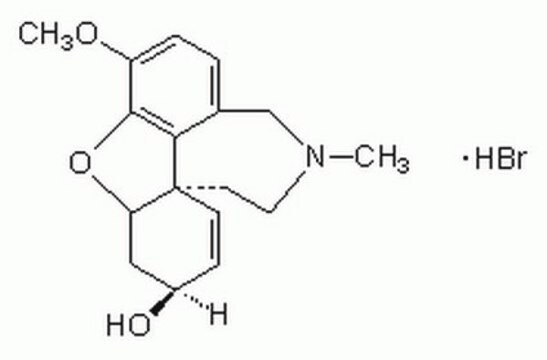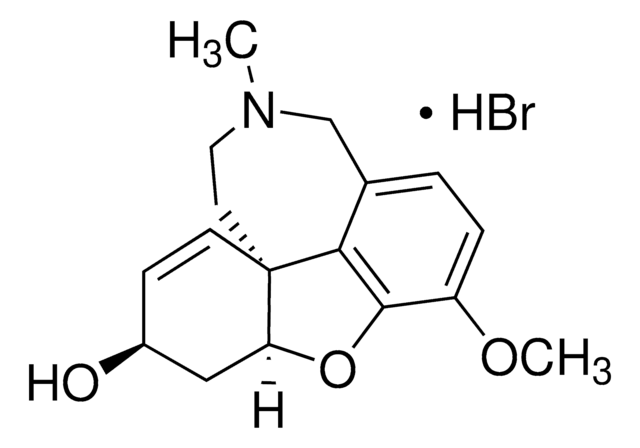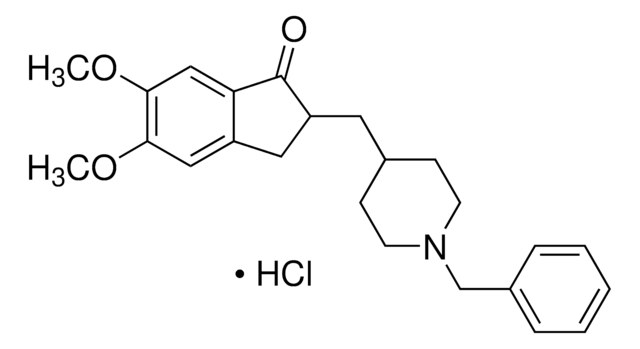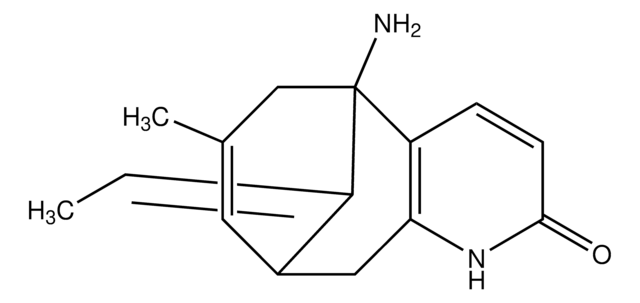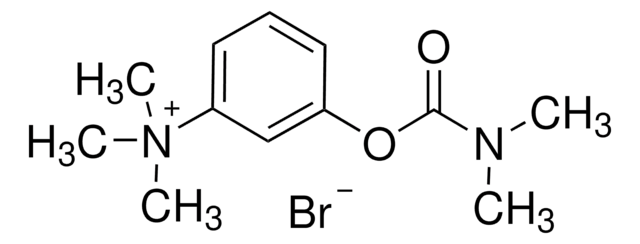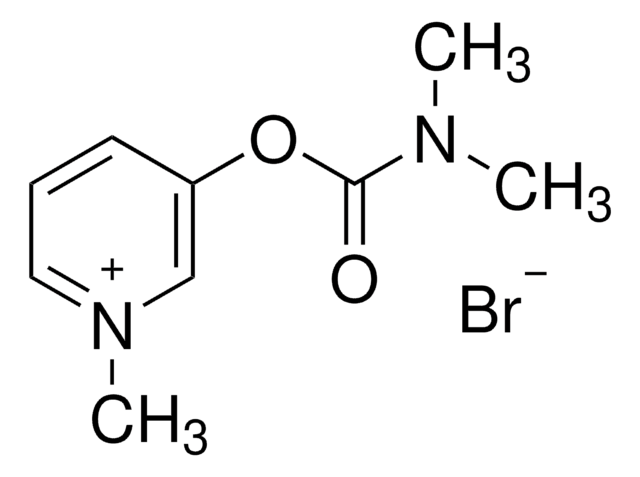G1660
Galanthamine hydrobromide from Lycoris sp.
≥94% (HPLC)
Sinónimos:
Galantamine hydrobromide
About This Item
Productos recomendados
origen biológico
plant (Ungeria victoris)
Nivel de calidad
Ensayo
≥94% (HPLC)
Formulario
powder
mp
270 °C
solubilidad
DMSO: soluble 10 mg/mL, clear, colorless
water: soluble 20 mg/mL, clear, colorless
temp. de almacenamiento
−20°C
cadena SMILES
Br[H].COc1ccc2CN(C)CC[C@@]34C=C[C@H](O)C[C@@H]3Oc1c24
InChI
1S/C17H21NO3.BrH/c1-18-8-7-17-6-5-12(19)9-14(17)21-16-13(20-2)4-3-11(10-18)15(16)17;/h3-6,12,14,19H,7-10H2,1-2H3;1H/t12-,14-,17-;/m0./s1
Clave InChI
QORVDGQLPPAFRS-XPSHAMGMSA-N
Información sobre el gen
human ... ACHE(43)
¿Está buscando productos similares? Visita Guía de comparación de productos
Descripción general
Aplicación
- as an AChE (acetylcholinesterase) inhibitor and positive control in acetylcholinesterase assay performed to determine the activity of AChE
- as a positive control in the screening of AChE inhibitors
- as a positive control in AChE inhibitory assay performed to determine the AChE-inhibitory activities of pyrithione and related sulfur-containing pyridine N-oxides
Acciones bioquímicas o fisiológicas
Envase
Palabra de señalización
Danger
Frases de peligro
Consejos de prudencia
Clasificaciones de peligro
Acute Tox. 3 Oral
Código de clase de almacenamiento
6.1C - Combustible acute toxic Cat.3 / toxic compounds or compounds which causing chronic effects
Clase de riesgo para el agua (WGK)
WGK 3
Punto de inflamabilidad (°F)
Not applicable
Punto de inflamabilidad (°C)
Not applicable
Equipo de protección personal
Eyeshields, Faceshields, Gloves, type P2 (EN 143) respirator cartridges
Elija entre una de las versiones más recientes:
¿Ya tiene este producto?
Encuentre la documentación para los productos que ha comprado recientemente en la Biblioteca de documentos.
Los clientes también vieron
Nuestro equipo de científicos tiene experiencia en todas las áreas de investigación: Ciencias de la vida, Ciencia de los materiales, Síntesis química, Cromatografía, Analítica y muchas otras.
Póngase en contacto con el Servicio técnico
